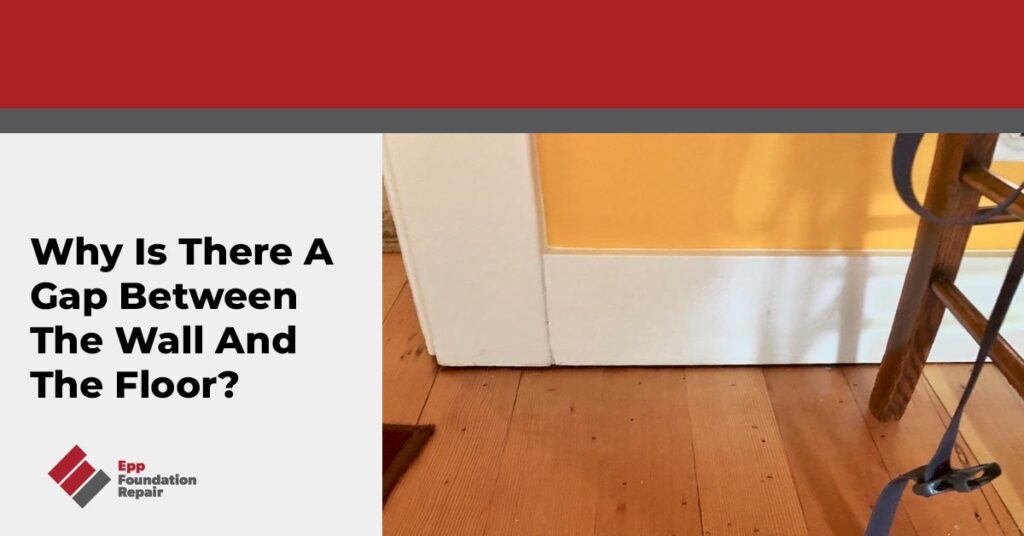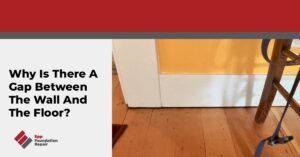Looking for information about a gap between the wall and the floor? If so, don’t hit that back button because that’s what we’re going to talk about in this article. We’ll review the causes of gaps between the wall and the floor, repair solutions, signs your home might have a foundation problem, and more.
Causes Of Gaps Between The Wall And The Floor
Unfortunately, a gap between the wall and the floor can indicate your home has structural damage. Some possible causes of a gap between the wall and the floor include the following:
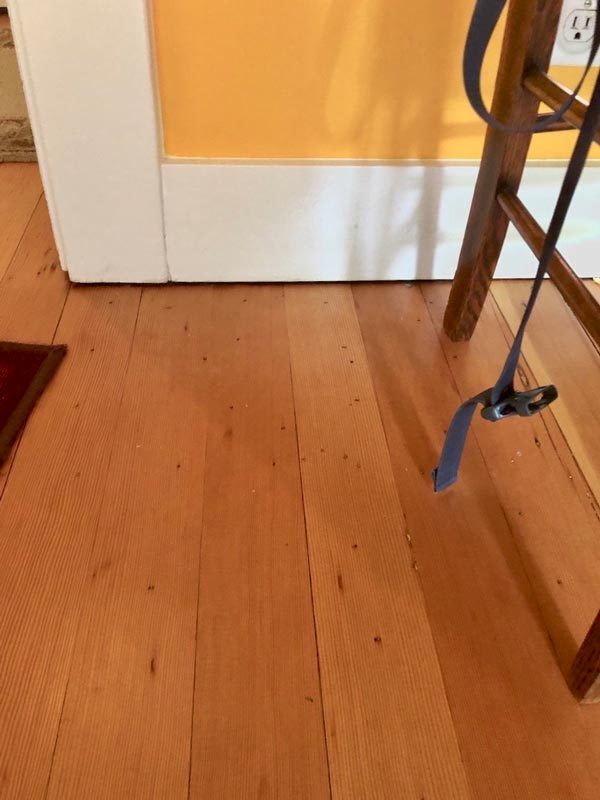
- One common cause of gaps between the wall and the floor is differential foundation settlement, or when the foundation settles into the ground unevenly. (See the infographic below for a visual representation of differential vs. uniform settlement.) Differential settlement can create gaps between the wall and the floor that may be visible to the naked eye. Differential foundation settlement can occur for various reasons, such as changes in soil moisture due to weather conditions and poor soil compaction during construction.
- Another potential cause of gaps between the wall and the floor is poor workmanship during construction or remodeling. When walls and floors are not properly installed, they may not fit together tightly, leaving gaps that can become more visible over time. This can be caused by various factors, such as using the wrong materials, poor planning, or lack of attention to detail during installation.
- In some cases, gaps between the wall and the floor may be caused by things such as rotting wood or termite damage.
Regardless of the cause, homeowners must promptly address gaps between the wall and the floor to avoid further damage or safety issues. Consulting with a professional foundation repair contractor can help identify the underlying cause and develop a repair plan to ensure the home’s structural integrity and safety.
Check out our post about – Garage foundation repair.
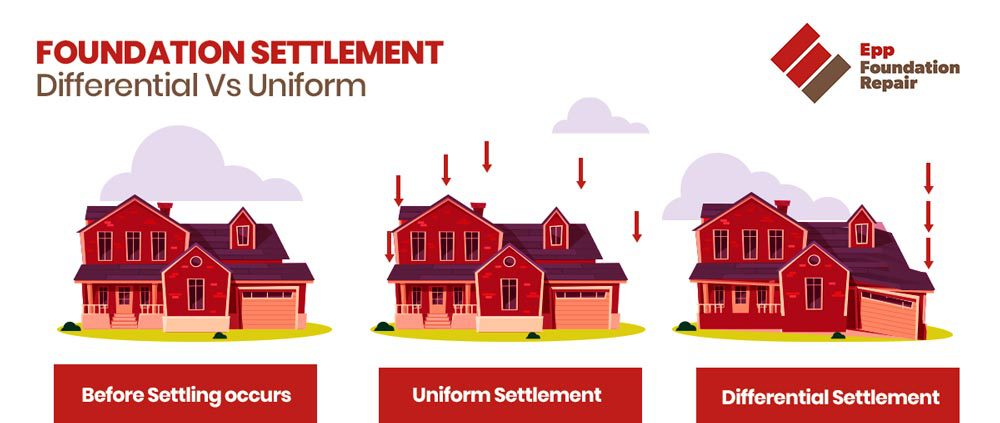
Repair Solutions For A Gap Between The Wall And The Floor
When it comes to repairing a gap between the wall and the floor, the chosen repair solution will depend on the cause of the gap. There are several possible repair solutions to consider. A gap caused by differential foundation settlement will not be repaired in the same way as a gap caused by poor workmanship.
If the gap was caused by differential foundation settlement, underpinning using push or helical piers will likely be the repair solution. Underpinning involves extending the home’s foundation to stronger soil that can support it. Once the piers are in place, the foundation is raised to maximum practical level, which means raised as far as possible without damaging the foundation. In most cases, the gaps will close. Underpinning is not a DIY project. Only experienced foundation repair contractors underpin foundations.
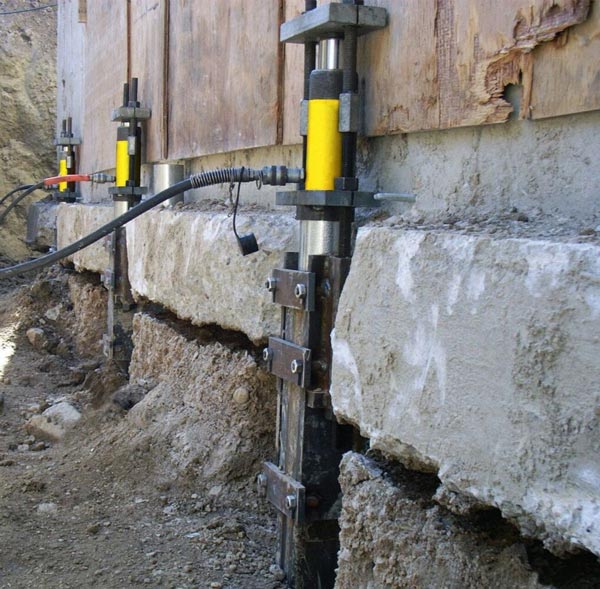
Other possible solutions for gaps between the wall and the floor caused by less serious problems include using caulking or sealant to fill in the gap. This can be a quick and cost-effective way to address the issue, but it may not be the most permanent fix. Over time, the sealant may crack or shrink, which could lead to the gap reappearing.
Another option for repairing a gap between the wall and the floor is to use foam backer rod. This material can be inserted into the gap to provide a stable base for the caulking or sealant to adhere to. Foam backer rod also helps to prevent the sealant from cracking or shrinking, which means the repair will last longer.
So, the best repair solution for a gap between the wall and the floor will depend on the size and severity of the gap and the underlying cause. By consulting with a foundation repair professional and considering all available options, homeowners can find the most effective and lasting repair solution for their particular situation.
Common Signs Of Foundation Problems
Foundation problems are common and can result in expensive repairs if left unaddressed. Several signs suggest a foundation problem. These include the following:
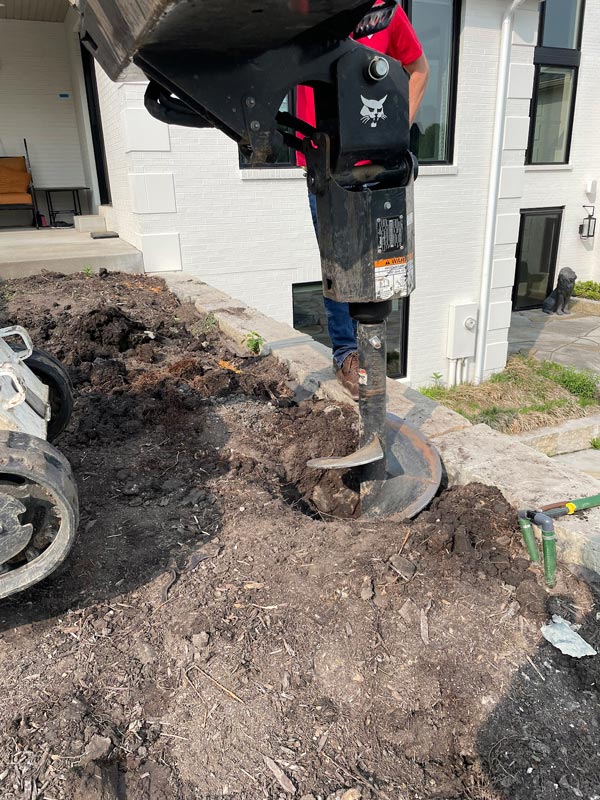
- The most common signs include cracks in the interior walls or floors, doors and windows that won’t open or close properly, stair step cracks in brick or masonry, sloping or uneven floors, and gaps between the walls, ceilings, and floors.
- Other indications of foundation problems include exterior cracks in the foundation walls or a visible gap between the foundation and the bricks or siding.
- Additionally, if a homeowner notices dampness or moisture in the basement or crawl space, it may be evidence of foundation issues.
It is important to note that these signs can often be mistaken for natural wear and tear in a home. Therefore, homeowners should be cautious and look for patterns. Are different signs appearing simultaneously or becoming worse over time?
Ignoring these signs and not addressing foundation problems early on can lead to further damage and even more costly repairs. If you notice any of the above – or anything else that strikes you as suspicious – contact an experienced foundation repair contractor right away and ask for an evaluation.
How To Prevent Foundation Problems
Since most foundation problems are caused by excess moisture in the ground around the foundation (i.e., poor drainage), one of the most important steps homeowners can take to prevent trouble is to control groundwater around the foundation. Here are some ways to do that:
- If necessary, regrade your yard so it slopes away from the foundation. This prevents groundwater from draining toward the foundation.
- Clean your gutters regularly so they’re not full of decaying leaves and other debris. You don’t want water spilling over the side of your home and soaking the ground around the foundation.
- Use downspout extensions to direct water away from the foundation.
- Avoid planting water-hungry vegetation next to the foundation.
- Install a drain tile system. This is the best way to waterproof a foundation. For more information about how drain tile systems work, see How Does A Drain Tile System Work?
- Lastly, regular foundation inspections can help spot problems early, including tiny cracks or signs of foundation movement. This will allow you to take corrective action before the issue becomes more serious and more expensive to repair.
If you’re concerned about a gap between your home’s wall and floor, contact us today to schedule a foundation evaluation. Since 1994, we’ve helped clients in Lincoln, Omaha, Southeastern Nebraska, Northwestern Missouri, and parts of Northeastern Kansas with foundation repair, crawl space encapsulation, basement waterproofing and concrete leveling for their homes.

